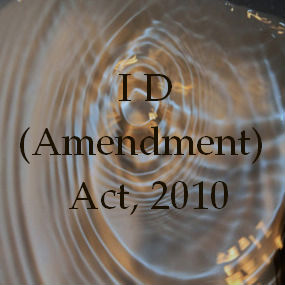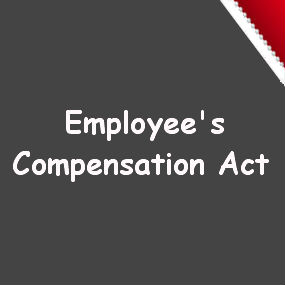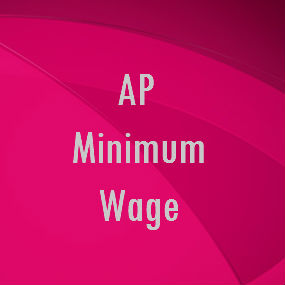>> What is the definition of a Factory for coverage under ESI?
Factory is defined under section 2(12) as "any premises including the precincts thereof whereon ten or more persons are employed or were employed on any day of the preceding twelve months, and in any part of which, a manufacturing process is being carried on or is ordinarily so carried on. but does not include a mine subject to the operation of Mines Act 1952, or a railway running shed”
>> Whether the persons employed who are not coverable under the Act are also counted for the purpose of counting 10/20 persons for coverage of factory/ establishment?
Yes. All persons employed in the premises including the precincts thereof irrespective of their wages including casual, trainees, contract employees are counted for the purpose of coverage of the factory/ establishment. Even the Directors employed are to be counted.
>> Who are the persons not to be counted for coverage of a factory?
The following persons are not to be counted
a) A proprietor or a partner whether drawing salary or not;
b) A contract Of lending the services of his employee;
c) An apprentice engaged for the first time under the Apprentice Act, 1961;
d) Persons employed on contract for service, e.g. legal, technical, tax consultants;
e) Persons employed in branch/sales offices etc. away from the factory premises are not to be counted for the purpose of covered as employee under Section 2 (9), if their wages does not exceed the ceiling limit prescribed.
>> What is meant by 'premises'?
The term 'Premises' and 'Precincts' have not been defined in the Act. According to the definition assigned to the 'premises' under Section 2(m) of the Factories Act, 1948, it is a generic building, or shed. In view of the word 'precincts', thereof ' separate buildings' located apart or a distance when used for one continuous manufacturing process shall also constitute the 'Premises'.
>> What is Manufacturing Process?
Manufacturing process shall have the meaning assigned to it in the Factories Act, as per Section 2(14-AA) of the Act. It is defined in section 2(K) of the Factories Act as “any process for
1) Making, altering repairing, ornamenting, finishing, packing, Oiling, washing, cleaning, breaking up, demolishing, or otherwise treating or adopting any article or substance with a view to its use, sale, transport, delivery, or disposal; or
2) Pumping of oil water, or sewages, or any other; or
3) Generating, transforming, or transmitting power; or
4) Composing types for( printing, by letter press. lithography, photogravure or other similar processes, or book binding; or
5) Constructing, reconstruction, repairing, refitting, finishing, or breaking up ships or vessel; or
6) Preserving or storing an article in cold storage; and
7) Tapping, collecting, cross matching and keeping in bottles, the blood, or whole human blood.
>> What are the establishments that attract coverage under ESI?
According to the notification issued by the State Government concerned under Section 1 (5) of the Act, the following establishments employing 20 or more persons for wages attracts ESI coverage.
1) Shops
2) Hotels or restaurants not having any manufacturing activity, but only engaged in 'sales'.
3) Cinemas including preview theatres;
4) Road Motor Transport Establishments;
5) News paper establishments.(that is not covered as factory under Sec.2(12));
6) Private Educational Institutions (those run by individuals, trustees, societies or other organizations) and Medical Institutions (including Corporate, Joint Sector, trust, charitable, and private ownership hospitals, nursing homes, diagnostic centers, pathological labs).
>> Who are the persons to be counted for coverage of an establishment?
The words 'premises' and 'precincts' used in the definition of 'factory' have not been used in the notifications issued by the State Governments, while extending the provisions of the Act to the establishments under Sec. 1 (5) of the Act. So long as the establishment employs a minimum prescribed number of 20 coverable employees for wages, it will stand covered under the Act whether these employees are employed at one place or at places away from each other, as they are engaged in the, organized activity of the same establishment. Thus, all the coverable employee including those working in branches, regd. office, sales office etc. whether situated in implemented area or not.
>> Can a factory or establishment once covered go out of coverage if the number of persons employed therein goes down to the minimum limit prescribed?
Once a factory or an Establishment is covered under the Act, it continues to be covered notwithstanding the fact that the number of persons/ coverable employees employed therein at any time falls below the required Limit or the manufacturing process therein ceases to be carried on (Section 1 (6) of the Act).
>> Is there any provision for 'exemption of a factory or establishment from ESI coverage?
Yes. If the employees in a factory or establishment are other-wise in receipt of benefits substantially similar or superior to those provided under the ESI Act, the appropriate, Government may grant exemption to such factory or establishment for a period of one year at a time prospectively in consultation with ESIC. Application for renewal is to be made three months before the date of expiry of exemption period (Section 87).
>> Who is a Principal Employer?
(A) In the case of a factory, any of the following:•
(I) Owner;
(ii) Occupier;
(iii) Managing Agent of the owner or occupier;
(iv) Legal representative of a deceased owner or occupier;
(v) Manager of the factory under the Factories Act, 1948.
(B) In the case of Establishments belonging to or under the control of Government of India:
(i) The Specified Authority
(ii) The Head of the Department (In the absence of specified Authority).
(C) In the case of other establishments:
Any person responsible for the supervision and control of the establishment.
>> Who is an Immediate Employer?
Immediate Employer can be any or all of the following:-
i. One who executes any work inside the premises of the principal employer of a factory or an establishment
ii. One who executes the work of a factory or establishment outside the premises under the supervision of its principal employer or his agent;
iii. One who lets on hire the services of his employees to the principal employer of a factory or establishment; and
iv. A Contractor (Sec. 2(13)).
Read More ->>





